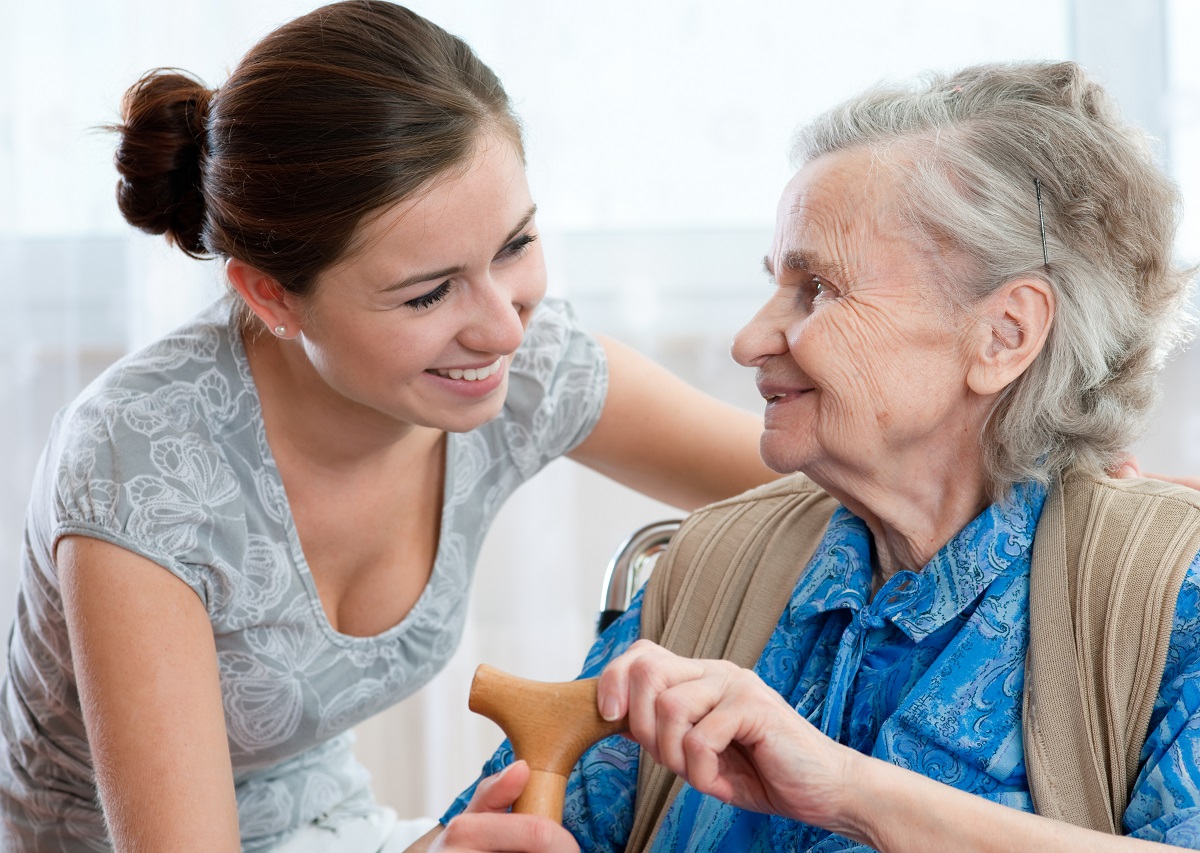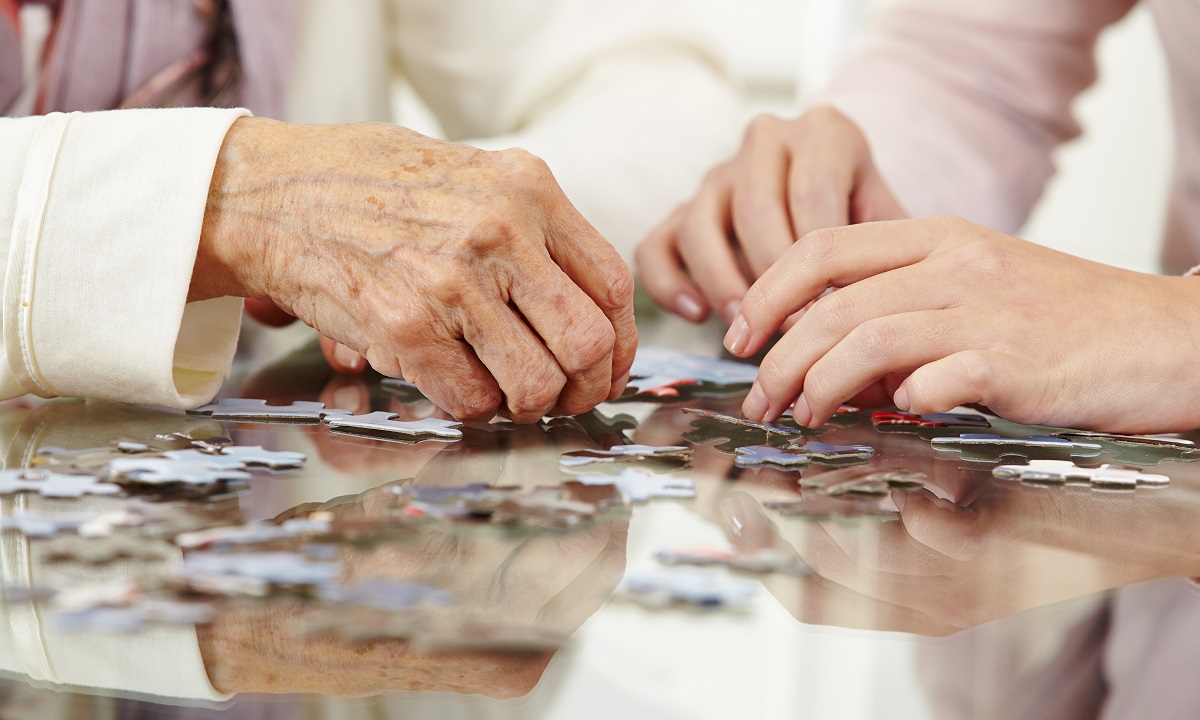Whether it’s guess the food, sandwich making or polishing cutlery, there are lots of cooking-related activities that you can do to keep people living in a care home engaged and happy
The kitchen is often seen as the heart of the home, so it can be difficult for people with dementia to arrive in a care home where they have little or nothing to do with cooking or spending time in a kitchen. However, that doesn’t mean you can’t still get them involved in related activities. They can be a powerful reminiscence tool and a way of establishing identity, while helping them to feel productive and purposeful. Take a look at the ideas below for activity inspiration…
1. Knead dough
For many of your residents, it was the norm to bake bread from fresh each day, so getting them to help out with making bread by kneading dough could be a great activity. Plus, the action of kneading can be very therapeutic and help to relieve stress.
2. Make meringues
The best meringues are where the egg whites have been whisked until they’re light and fluffy, something which can take a long time when whisking by hand. That’s where you residents can help – let them take turns in whisking the whites, add some sugar and then pop in a low oven until they’re crispy. An added bonus is that meringues will dissolve in the mouth, so are unlikely to be a choking hazard for those who struggle with chewing and swallowing.
3. Fruit kebabs
Get a wide selection of chopped up fruit, from bananas and strawberries to chunks of apple or grapes, and get your residents involved in threading them onto wooden skewers – a simple task that everyone can help with. If you’re worried about sharp skewers, saw off the pointy end of the skewer with a bread knife. You could even melt some chocolate for them to dip the kebabs into.
4. Lay the table
This can be a useful job for someone with dementia, so long as they still have the logic to know which side of the plate knives and forks should sit (it’s common for people with dementia to get cutlery positions muddled up). If not, consider getting some placemats that clearly mark where cutlery should sit. Alternatively, clearing away or helping with washing up could be an enjoyable activity for some.
5. Make sandwiches
An easy activity for anyone who’s interested is to make up some sandwiches. It could form part of a daytrip if you’re taking some of your residents out for a picnic, for example. Spreading bread with butter and adding some pre-grated cheese and ham is reasonably straightforward for someone with dementia, but will provide a sense of purpose for them.
6. Peel and chop vegetables
Depending on the dexterity and strength of your residents with dementia, peeling and chopping vegetables can be a purposeful and rewarding activity. Use a ‘Y’-shaped safety peeler to ensure stability and only let them use knives if they’re dextrous or wearing protective gloves.
7. Play a blind taste test game
Create a game by picking some distinctive foods that might trigger some memories – think Angel Delight, chocolate, cream crackers – and see if they can work out what they are when blindfolded. Afterwards, get them to share their experiences of eating these foods when they were younger.
8. Washing up
There’s something inherently calming, mindful and satisfying about grabbing a pair of yellow marigolds and doing a pile of washing up. Don’t assume that as residents, they always want to be waited on hand and foot. If someone with dementia seems bored or agitated and wants a job to do, washing up can feel very productive and useful. Even if your home has an industrial dishwasher, you can set aside some plates, bowls and saucepans for someone to get stuck into if it makes them feel better. If you do decide to offer this as an activity, be mindful of the risk of sharp knives and breakable crockery.
9. Decorate pizzas
These can be very easy to create, particularly if you buy ready-made dough from the supermarket. It doesn’t have to replace their normal meal, but act more as a snack and fun cooking activity. Simply roll out some pizza dough, cover with passata sauce and then let your residents create and add their own toppings, from grated mozzarella cheese and sliced pepperoni to mushrooms, sweetcorn, pieces of chicken and pepper.
10. Make smoothies
These can be satisfying to make if some of your residents struggle with lumpy foods or very liquid foods (because dementia can cause chewing and swallowing problems). Don’t worry, you don’t need a very whizzy blender (although Nutribullets are great for this), just make sure the food is chopped well and there’s enough liquid. It’s a great way of boosting the nutrient intake of residents. You could even freeze some of the smoothie mixes into moulds to make ice lollies in summer.
11. Sort and polish cutlery
Once again, this chore-style activity can be a great way of distracting someone who seems restless or agitated. Polishing was a very common task for those growing up in the last century (and before the advent of dishwashers) and it is reasonably easy to do. Simply set up a few residents with a bowl of clean, but unsorted cutlery, some warm water and tea towels, and containers for the cutlery.
12. Make shortbread
The beauty of shortbread is that it contains minimal ingredients and is easy to mix together, roll out and cook. Whether you get your residents to help with the mixing of the butter and sugar, or the rolling out of the shortbread dough, it can make for a great afternoon activity. And the best bit is they’ll be able to eat their offerings with their afternoon cup of tea. Try this recipe.
13. Have an international food day
It can be nice to pencil in certain days that have an international theme and tailor the day’s menu around that. For example, you could have an Italian day (and then do the pizza-making as an activity), or a Scotland day (Robert Burns’ birthday is a good date to choose) and make Scottish shortbread and eat haggis. In all cases, it can provide interest and stimulate conversation between fellow residents, as well as helping care workers to get to know people and their personal stories better.
14. Ice and decorate cupcakes or biscuits
You can make this activity as simple or as complicated as you like, depending on the needs and abilities of your residents. For example, it’s possible to buy ready-made cupcakes and biscuits, and pre-made frosting, so all they need to do is add them, rather than making the cakes and icing from scratch. Consider making it part of a ‘themed’ day, so topping cupcakes with icing and chocolate eggs at Easter, or icing tree-shaped biscuits at Christmas.
SHARE
Explore more




